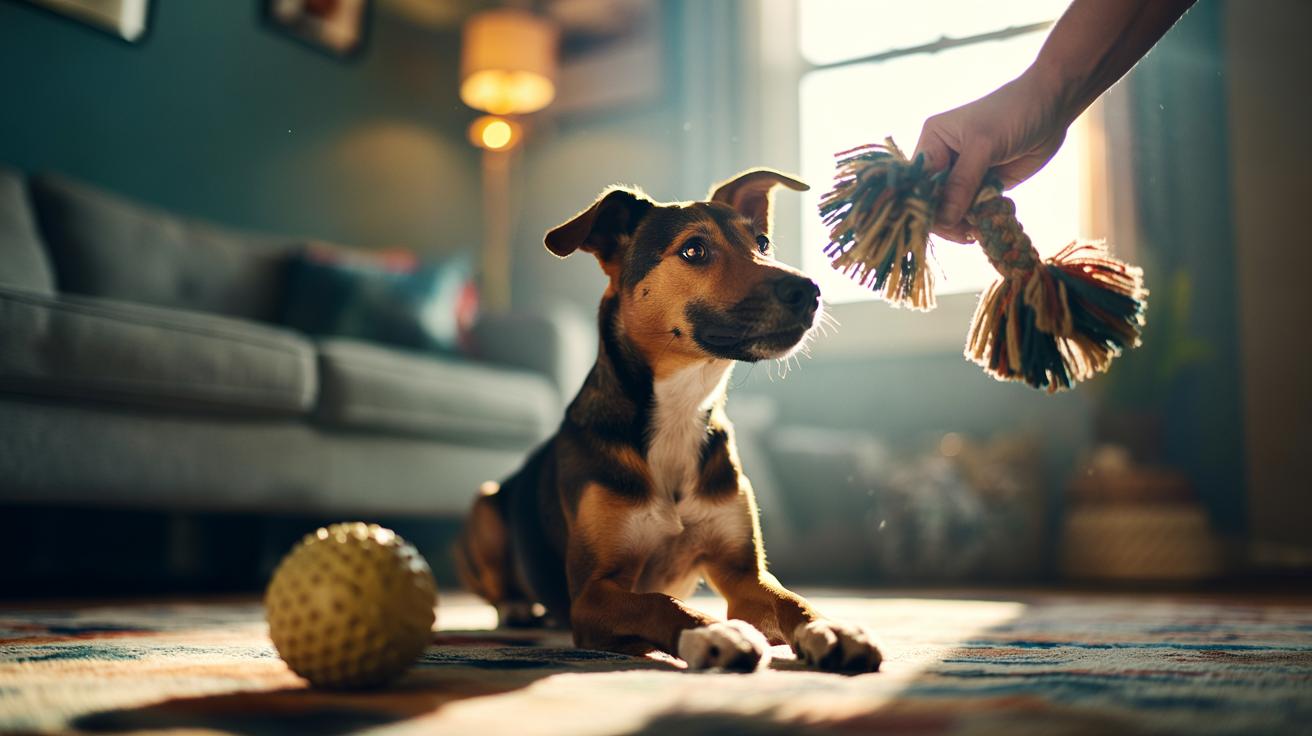In a nutshell
- 🎯 Preserve novelty with a two-toy rotation to prevent habituation and keep dopamine-driven engagement high.
- 🧠 Novelty activates the brain’s seeking system (nucleus accumbens), sharpening attention and learning—rotate before interest dips.
- 🔁 How-to: pick two contrasting toys (texture/sound/odour), cue swaps, end bouts early, and trade up to prevent guarding—prioritise consistency over intensity.
- 🚦 Monitor arousal: loose engagement is ideal; over-arousal needs shorter bouts and food trades; under-arousal signals an immediate swap or context change.
- 📅 Weekly plan: run 5–8 micro-sessions/day (3–5 minutes), store the resting toy out of sight, wash/retire to refresh odour, and log enthusiasm to refine cadence.
The “two-toy rotation” is the kind of low-tech hack dog owners dream of: a simple switch that reignites your pet’s enthusiasm every time. Instead of letting a single favourite become stale, you swap between two distinct toys at planned intervals, preserving novelty and the brain’s anticipation of reward. That anticipation is powered by dopamine, the neurotransmitter that primes the body for action and learning. Rotate before boredom begins, not after your dog has checked out. Used well, this trick sustains focus during training, channels energy into play rather than mischief, and reduces nagging behaviours that often stem from under-stimulation. Here’s how and why it works—and how to build a routine that sticks.
Why Novelty Sparks the Canine Brain
Dogs are wired to explore. In the midbrain and nucleus accumbens, novelty triggers dopamine release, amplifying the brain’s “seeking system.” That surge does not merely create pleasure; it sharpens attention, boosts persistence, and accelerates learning by flagging “new and potentially valuable” stimuli. Novelty is a signal that effort might pay off. When a dog expects something familiar, neural response fades—a phenomenon known as habituation. By swapping toys just before interest dips, you stop habituation from taking hold and keep dopamine-driven curiosity alive.
The key is not chaos but controlled unpredictability. Your dog learns that a toy can “disappear” and return later, refreshed in value. This cycle builds a feedback loop: search, find, play, reset. The effect resembles interval training for the brain—bursts of engagement followed by brief pauses. Over time, you’ll see crisper recalls, cleaner releases of the toy, and fewer frantic scavenger behaviours indoors. Novelty, delivered on a schedule, is sustainable enrichment.
How the Two-Toy Rotation Works
Choose two toys that differ in texture, sound, or odour—say a rubber ball and a fleece tug. Start a one-to-two-minute play bout with Toy A, then cue an exchange (“Swap” or “Thank you”). As you pocket or hide Toy A, produce Toy B with energy, then repeat. End each bout while your dog still wants more. This timing preserves the high-reward prediction that fuels dopamine. If your dog guards, trade up with a tiny food reward or toss Toy B past you so movement draws attention away from the surrendered item.
Use clear rituals: a container or shelf where retired toys “sleep,” a release word to start, and a calm sit before each re-launch to prevent over-arousal. Adjust cadence to your dog: shorter bursts for excitable terriers; slightly longer engagement for thoughtful scent-hounds. Indoors, keep throws short and focus on tug or problem-solving. Outdoors, use fetch arcs or nose-work hides. Consistency beats intensity. Two toys, one rule: rotate before appetite dips.
Science-Backed Benefits and What to Watch
Handled well, this routine brings measurable gains. Expect steadier engagement, faster response to cues, and better impulse control as your dog learns to relinquish one reward in anticipation of another. The rotation reduces frustration chewing on furniture because you’re meeting the brain’s need for novelty in a controlled way. It also helps anxious dogs by creating a predictable pattern: excitement, exchange, reset. Predictability around novelty is a paradox that calms the nervous system while keeping play thrilling.
Monitor arousal so dopamine stays productive, not chaotic. Look for soft eyes, bouncy movement, and quick recovery during pauses. Guarding, stiff posture, or frantic panting signal you should shorten bouts, add food trades, or switch to quieter seeks. Use the table below to decode body language and act early.
| Indicator | What It Looks Like | What It Means | Action |
|---|---|---|---|
| Loose Engagement | Soft eyes, wagging tail, quick swaps | Optimal arousal; dopamine aiding focus | Maintain cadence and praise |
| Over-Arousal | Hard stare, gripping, vocalising | Frustration rising; risk of guarding | Shorten bouts, add food trades, pause 30–60s |
| Under-Arousal | Sniffing off, turning away | Habituation; novelty lost | Swap toy now; change location or texture |
A Weekly Rotation Plan You Can Actually Keep
Build a simple template you can repeat. Aim for 5–8 micro-sessions a day, each 3–5 minutes, with 30–60 seconds’ reset between toy swaps. Mornings: fetch bursts in the garden with Toy A, then a short tug with Toy B. Lunchtime: scent hides indoors using Toy A, then a calmer chew or tug with Toy B. Evenings: gentle corridor retrieves to avoid over-stimulation. Short, frequent rotations outperform one long, draining playtime.
Refresh novelty without constant spending: wash toys on alternate days to vary odour, store the “resting” toy out of sight, and retire each item weekly so it returns after a week’s absence feeling “new.” Keep a log of enthusiasm on a 1–5 scale to catch patterns. If interest dips below 3 twice in a row, change surface (grass to carpet), distance, or toy category. Simplicity sustains habits: two toys, one pocket reminder, and a phone timer.
The two-toy rotation channels the brain’s love of novelty into healthy, teachable energy. By swapping before boredom, you keep dopamine in the sweet spot where focus and joy meet, and you turn everyday play into an effortless training engine. Small structure creates big behavioural dividends. Try it for a week, note the changes, and adjust cadence to your dog’s temperament and age. Which two toys will you pick first, and how will you tailor the swap rhythm to match your dog’s unique play style?
Did you like it?4.4/5 (23)
